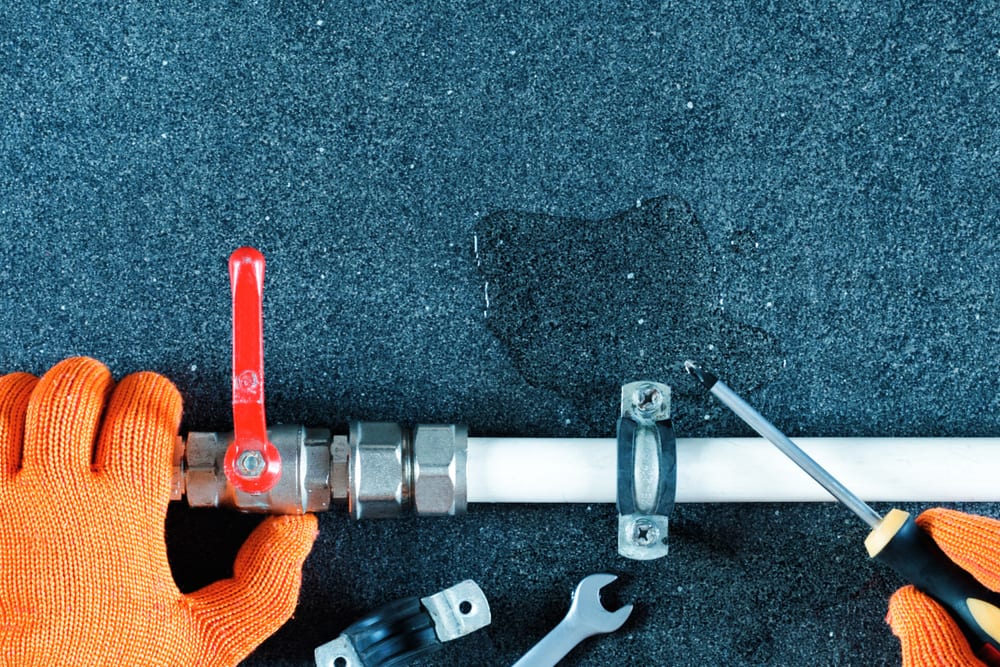Expose Hidden Water Line Leaks: Six Proven Ways for Spotting
Expose Hidden Water Line Leaks: Six Proven Ways for Spotting
Blog Article
This post in the next paragraphs in relation to Locating water leaks is fairly informative. You should take a look.

Early discovery of leaking water lines can minimize a possible calamity. Apart from conserving you cash, it will lessen the worry as well as frustration. The moment you discover a leak, calling your plumber for repairs is the most effective remedy. Some little water leakages might not be visible. Here are some hacks that help if you can not identify it with your nude eyes.
1. Examine the Water Meter
Every house has a water meter. Checking it is a surefire manner in which aids you find leakages. For beginners, shut off all the water resources. Make sure nobody will flush, make use of the faucet, shower, run the cleaning equipment or dishwashing machine. From there, go to the meter and also watch if it will transform. Considering that nobody is using it, there need to be no activities. That shows a fast-moving leak if it relocates. If you detect no modifications, wait an hour or two and also inspect back once again. This suggests you might have a slow-moving leak that can even be underground.
2. Examine Water Usage
Examine your water costs and track your water consumption. As the one paying it, you ought to observe if there are any type of inconsistencies. If you spot sudden changes, despite your intake being the same, it implies that you have leakages in your plumbing system. Bear in mind, your water expense must fall under the very same variety monthly. An unexpected spike in your costs shows a fast-moving leak.
A steady boost every month, also with the very same behaviors, shows you have a sluggish leakage that's additionally gradually escalating. Call a plumber to completely check your residential or commercial property, specifically if you really feel a cozy location on your floor with piping underneath.
3. Do a Food Coloring Examination
When it involves water intake, 30% comes from toilets. Test to see if they are running appropriately. Decline flecks of food shade in the tank and also wait 10 mins. There's a leak between the tank as well as dish if the shade somehow infiltrates your bowl during that time without flushing.
4. Asses Exterior Lines
Don't fail to remember to inspect your exterior water lines also. Examination faucets by affixing a yard hose pipe. Should water seep out of the link, you have a loosened rubber gasket. Change this as well as make certain all connections are limited. It will certainly aid get it skillfully analyzed as well as maintained annually if you have actually got a sprinkler system. One tiny leakage can lose lots of water as well as increase your water expense.
5. Assess the circumstance and also inspect
House owners ought to make it a routine to examine under the sink counters and even inside closets for any type of bad odor or mold and mildew development. These two warnings show a leak so timely focus is required. Doing regular inspections, also bi-annually, can conserve you from a significant trouble.
Inspect for discolorations and also damaging as many pipes and home appliances have a life span. If you suspect dripping water lines in your plumbing system, do not wait for it to escalate.
Early detection of dripping water lines can reduce a possible disaster. Some little water leaks might not be noticeable. Inspecting it is a surefire method that helps you discover leaks. One little leak can waste tons of water and also surge your water bill.
If you think dripping water lines in your plumbing system, do not wait for it to intensify.
WARNING SIGNS OF WATER LEAKAGE BEHIND THE WALL
PERSISTENT MUSTY ODORS
As water slowly drips from a leaky pipe inside the wall, flooring and sheetrock stay damp and develop an odor similar to wet cardboard. It generates a musty smell that can help you find hidden leaks.
MOLD IN UNUSUAL AREAS
Mold usually grows in wet areas like kitchens, baths and laundry rooms. If you spot the stuff on walls or baseboards in other rooms of the house, it’s a good indicator of undetected water leaks.
STAINS THAT GROW
When mold thrives around a leaky pipe, it sometimes takes hold on the inside surface of the affected wall. A growing stain on otherwise clean sheetrock is often your sign of a hidden plumbing problem.
PEELING OR BUBBLING WALLPAPER / PAINT
This clue is easy to miss in rooms that don’t get much use. When you see wallpaper separating along seams or paint bubbling or flaking off the wall, blame sheetrock that stays wet because of an undetected leak.
BUCKLED CEILINGS AND STAINED FLOORS
If ceilings or floors in bathrooms, kitchens or laundry areas develop structural problems, don’t rule out constant damp inside the walls. Wet sheetrock can affect adjacent framing, flooring and ceilings.
https://www.servicemasterbyzaba.com/blog/how-to-detect-water-leakage-in-walls/

I ran across that piece of writing about Hacks to detect leaks while looking around the web. Sharing is good. You never know, you will be helping someone out. We recognize the value of reading our article about Detecting hidden plumbing leaks.
Tap problems? Reach. Report this page